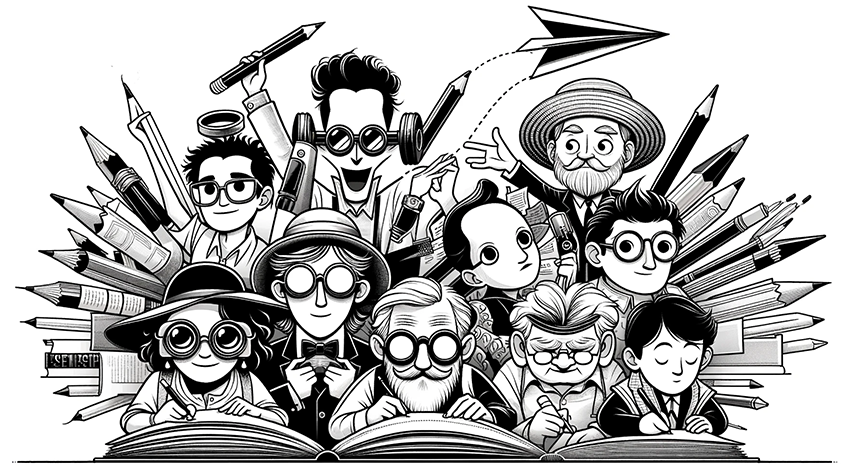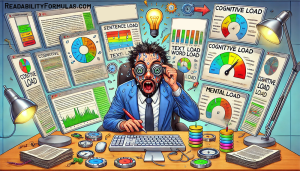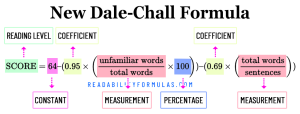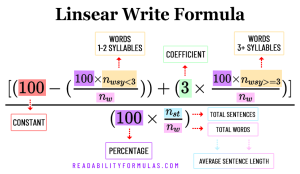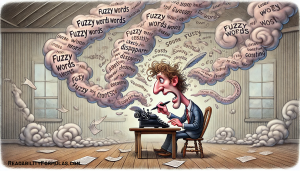This scenario is all too common. It illustrates a challenge in the publishing industry: engaging readers with accessible content. John joins the 54% of adults in the U.S. with average reading skills. He, like many, could benefit from clearer, more accessible information.
Publishers constantly strive to bridge the gap between their content and their audience’s needs. The success of written content often depends on its reach and readability. This is where readability formulas come in. Born out of rigorous linguistic research, these formulas can score the clarity of text.
Understanding Readability Formulas
Readability formulas are important: the average American reads at a 7th to 8th-grade level, as reported by the Literacy Project , yet most content is written at an 10th-grade level or higher. These tools can assess how quickly a reader can comprehend material. For example, the Flesch-Kincaid Grade formula might say, “This book is at a 5th-grade reading level.” That means the words and sentences are about as complex as what a 5th grader can understand upon first reading.
Benefits of Readability Formulas
- Audience Profiling: The Literacy Project Foundation states that 45 million Americans are “functionally illiterate.” They cannot understand content above an 8th-grade level. Tailoring content to meet the needs of your audience will engage and retain their interests.
- Improved Comprehension: The Organization for Economic Co-operation and Development (OECD) found that poor literacy skills are linked with lower education, wages, and even poorer health. Matching content to the reader’s reading level can improve their learning abilities.
- Reader Engagement: Content that is easier to digest engages readers more. A study from the American Press Institute revealed that 50% of readers stop reading an article because it’s too long or complex.
- Accessibility: Accessible writing is essential for inclusivity; it ensures all readers, regardless of educational or learning skills, can engage with what they are reading.
- Efficiency in Editing: For editors, readability formulas provide a concrete metric to streamline the editing process, which can otherwise be quite subjective.
- Legal and Compliance Standards: The Plain Writing Act of 2010 advises federal agencies to use “clear Government communication that the public can understand and use.” Readability formulas are tools to comply with such mandates.
Applications in the Publishing Industry
- Educational Publishing: This sector will reach $342.1 billion by 2025 according to Research and Markets . Readability can help create age-appropriate learning materials.
- Marketing and Communication: Marketing professionals know that readability can make or break a campaign. With the average attention span at 8 seconds, based on studies from Microsoft , spreading the message quickly and simply is essential.
- Novel and General Fiction: In creative writing, readability is still important. While complex literary styles are often critiqued, valued and praised, knowing the story’s readability levels can help identify potential barriers that might limit a book’s readership.
- Digital Content Creation: In the realm of SEO, Backlinko reported that content readability is a factor considered by Google’s algorithm, affecting millions of search queries daily.
- Technical Writing: Technical writers are constantly challenged to balance accuracy with readability. They must write clearly and concisely so readers understand and follow instructions successfully. The jobs for technical writers is projected to increase 7% from 2019 to 2029, according to the U.S. Bureau of Labor Statistics .
- Legal Publishing: For legal publishers, readability is a necessity. In 2018 legal-tech startups had to raise $1 billion in funding to address, among other things, the accessibility of legal documents.
- Government/Policy Documents: Government agencies use these tools to make reports and policy papers more understandable.
- Health and Medical Publishing: In health and medical information, clarity is crucial. Misunderstandings can have serious effects. Readability is not just useful here; it’s ethically necessary.
- Corporate Communications: Clear internal communication is important for any company. With clearer materials, companies can boast a 3.5 times higher likelihood of outperforming their peers, leading to better-informed employees and streamlined business operations.
- News Media: In an era where fake news can spread six times faster than factual content, the clarity of news stories is needed for maintaining public trust. Readability tools are invaluable for news writers, who must ensure their stories are comprehensible to a diverse readership.
- Children’s Literature: Publishers aim to strike a delicate balance between engaging storytelling and language development. With only 35% of fourth-graders reading at or above a proficient level, readability tools can guide publishers to produce books that captivate and promote literacy growth.
- ESL (English as a Second Language) Materials: For ESL learners, materials need to increase in complexity as their skills improve. Readability formulas can help create effective learning content.
- Scriptwriting/Screenwriting: Scripts must be clear for actors and directors, and readability tools can help ensure that.
- Literary Journals and Magazines: Readability tools assist literary publishers in matching their content to their readers’ levels, which is useful for attracting a broader audience.
- Self-Publishing Platforms: Readability is also important for self-publishing services, as they help independent authors refine their work before publishing.
CASE STUDIES IN PUBLISHING
Here are some case studies and examples showing the impact of readability across different sectors:
Case Study: BrightPath Learning Resources
BrightPath Learning Resources redesigned their science curriculum for middle schoolers using the Flesch-Kincaid readability tests. By simplifying language and sentence structure, they increased test scores by 20% , and teachers reported a 30% decrease in classroom confusion during science lessons.
Case Study: GreenGear Outdoor Equipment
When GreenGear Outdoor Equipment shifted their product descriptions to a 6th-grade reading level, their online sales increased by 65% . Customer reviews frequently mentioned the clear and easy-to-understand product information as a deciding factor in their purchases.
Case Study: TechPro Inc.
TechPro Inc. used readability on their user manuals for home routers. Subsequently, customer support calls dropped by 40% , and positive feedback on ease of setup rose dramatically.
Case Study: ClearLaw Legal Forms
After ClearLaw Legal Forms used readability tools to simplify their online contract templates, sales of their DIY legal forms grew by 150% . Customers felt more confident in understanding the legal language. This led to a higher rate of form completion and return business.
Case Study: City of Springfield
In 2021 the City of Springfield adopted the Plain Writing Act; they revised their public policy documents to meet a 9th-grade reading level. This increased community engagement, with a recorded 75% more public comments on policy proposals.
Case Study: HealthLine Portal
HealthLine Portal’s goal to publish patient educational materials at or below an 8th-grade reading level resulted in reducing hospital readmissions by 30% . This suggested patients better understood their discharge instructions and home care instructions.
Case Study: Daily News Simplified
Daily News Simplified started using readability formulas to edit their articles for a broader audience. As a result, they experienced a 50% growth in readership, including gains in the 18-24 age demographic.
Remember John at the start of this article? Let’s reimagine that night with a different ending—one where readability tools were used effectively.
After several unhelpful articles, John stumbles upon one more link. This time, the difference is clear immediately. The article greets him with short, clear sentences. Unfamiliar terms are defined or explained. Bullet points break down each step of solving the equation, and examples are explained in a way that relates to everyday life. This content had been crafted with a readability tool, designed to match John’s literacy level, to deliver information in a digestible, approachable manner.
The complex concepts are now demystified, and John’s confidence grows. He gently nudges his daughter awake. With a newfound understanding, he guides her through each problem. The homework is complete, her comprehension solidified, and John’s confidence is restored—all because the information was made accessible to him.
John’s experience had transformed from confusion to comprehension, thanks to a writer’s thoughtful application of readability strategies. This change isn’t just about John and his daughter; it’s about millions of readers who can benefit from content that respects their needs and time. With readability tools, writers and publishers have the power to unlock the potential in every reader.
Scott, Brian. “Why Should Publishers Use Readability Formulas?.” ReadabilityFormulas.com, 22 Nov. 2024, https://readabilityformulas.com/why-should-publishers-use-readability-formulas/.
